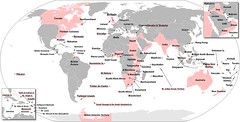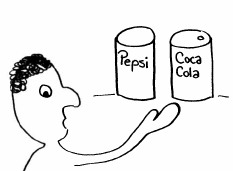| 6255979970 | ambiguity | A literary technique in which a word, statement, or literary work is deliberately endowed with multiple meanings |  | 0 |
| 6255979971 | aphorism | A statement of truth, moral, or philosophical principles expressed in a concise, witty, ans somewhat terse manner |  | 1 |
| 6255979972 | epic poem | Long narrative poem that includes heroic deeds |  | 2 |
| 6255979973 | flashback | Narrative interruptions in which past events are inserted in the story line in order to provide background information or context that helps readers to interpret current events in a different light |  | 3 |
| 6255979974 | syntax | The way in which words and phrases are placed together in sentences to convey a certain meaning |  | 4 |
| 6255979975 | pastiche | Artistic work in a style that imitates a wide mixture of themes, characters, and concepts from different literary texts |  | 5 |
| 6255979976 | motif | Recurring symbol, image, theme, or other narrative detail that becomes a unifying element in the literary work |  | 6 |
| 6255979977 | analogy | A technique in which two things that are very different are compared to one another in order to reveal surprising truths about one or both of the elements |  | 7 |
| 6255979978 | bildungsroman | A coming of age story |  | 8 |
| 6255979979 | foreshadowing | A literary technique in which a writer gives hints as warnings or indications of future events that will occur in the narrative |  | 9 |
| 6255979980 | monologue | Dramatic speech delivered by a single character in a play |  | 10 |
| 6255979981 | symbolism | The use of an object, person, situation, or word to represent or suggest an idea or belief |  | 11 |
| 6255979982 | frame narrative | Literary technique in which an introductory story is presented for the purpose of setting the stage for a second narrative: a story within a story |  | 12 |
| 6255979983 | euphemism | The use of a word that is less harsh in place of one that may be perceived to be blunt or offensive |  | 13 |
| 6255979984 | juxtaposition | Placing two or more things side by side for the purpose of comparing or contrasting them |  | 14 |
| 6255979985 | eponym | The use of a real or fictional person's name as a descriptive term |  | 15 |
| 6255979986 | neoclassical | A revival of a classical (Greek/Roman) style or treatment in art literature, architecture, or music |  | 16 |
| 6255979987 | chiasmus | a reversal in the word order of words in two otherwise parallel sentences |  | 17 |
| 6255979988 | metaphor | figurative language that describes something as though it actually were something else |  | 18 |
| 6255979989 | metonymy | the substitution of one term for another that is generally associated with it. (ex. the crown declared that the man would be executed.) |  | 19 |
| 6255979990 | onomatopoeia | the use of words that imitate the sounds they represent |  | 20 |
| 6255979991 | paradox | a statement or expression so surprisingly self-contradictory but ends up being true on some level |  | 21 |
| 6255979992 | parallelism | the use of similar grammatical structures or word order. |  | 22 |
| 6255979993 | point of view | the perspective that a narrator takes toward the events it describes |  | 23 |
| 6255979994 | pun | a witty word-play which reveals that words with different meanings have similar or even identical sounds |  | 24 |
| 6255979995 | polysyndeton | A literary technique in which conjunctions are used repeatedly in quick succession for an artistic or stylistic effect - often slows the speed of reading and emphasizes each item in the list |  | 25 |
| 6255979996 | asyndeton | Purposely leaving out conjunctions while maintaining the grammatical construction of a phrase. Used to build rhythm, speed, and momentum in writing |  | 26 |
| 6255979997 | archetype | a symbol found in many cultures |  | 27 |
| 6255979998 | dramatic irony | a situation where the audience knows something that the characters on stage are not aware of |  | 28 |
| 6255979999 | allusion | a reference to a piece of literature, character, historical figure that the author assumes the reader will recognize |  | 29 |
| 6255980000 | diction | the word choices made by a writer |  | 30 |
| 6255980001 | didactic | having the primary purpose of teaching or instructing |  | 31 |
| 6255980002 | exposition | the beginning portion of Freytag's pyramid where the background information, characters and setting are introduced |  | 32 |
| 6255980003 | inciting incident | the spark or complication that "gets the action going" in the play
the event that sets the plot into motion |  | 33 |
| 6255980004 | denouement (catastrophe) | The final outcome of the main dramatic complication in a literary work or the outcome of a complicated sequence of events |  | 34 |
| 6255980005 | omniscient narrator | a narrator who is able to know, see, and tell all, including the inner thoughts and feelings of the characters |  | 35 |
| 6255980006 | theme | Central idea of a work of literature/ Meaning of the work as a whole / Lesson about the human condition. |  | 36 |
| 6255980007 | tone | A writer's attitude toward his or her subject matter revealed through diction, figurative language, and organization. |  | 37 |
| 6255980008 | deus ex machina | an unexpected power or event saving a seemingly hopeless situation, especially as a contrived plot device in a play or novel |  | 38 |
| 6255980009 | allegory | a piece of writing in which abstract ideas are represented by characters and events. Usually political or moral in nature |  | 39 |
| 6255980010 | alliteration | beginning of same letter or sound in closely connected words |  | 40 |
| 6255980011 | anaphora | repetition in first part of a sentence , to have an artistic meaning |  | 41 |
| 6255980012 | antagonist | a hostile person who is opposed to another character |  | 42 |
| 6255980013 | apostrophe | figure of speech used to adresss an imaginary character |  | 43 |
| 6255980014 | aside | when a character's dialogue is spoken but not heard by other actors on the stage |  | 44 |
| 6255980015 | assonance | repetition of vowel sounds |  | 45 |
| 6255980016 | blank verse | poetry written in meter without an ending rhyme |  | 46 |
| 6255980017 | cacophony | blend of unharmonious sounds |  | 47 |
| 6255980018 | caesura | pause in the middle of a line |  | 48 |
| 6255980019 | catharsis | the release of emotions through art (emotional cleanse) |  | 49 |
| 6255980020 | flat character | story character who has no depth; usually has one personality or characteristic |  | 50 |
| 6255980021 | round character | character who has complex and perhaps contradictory personality traits |  | 51 |
| 6255980022 | dynamic character | changes throughout the story, through major conflict |  | 52 |
| 6255980023 | static character | person who doesn't change throughout story; keeps same personality |  | 53 |
| 6255980024 | characterization | process of revealing characters personality |  | 54 |
| 6255980025 | climax | point where conflict hits its highest point; the turning point toward resolution of conflict |  | 55 |
| 6255980026 | comedy | drama that is amusing or funny |  | 56 |
| 6255980027 | conflict | struggle between opposing forces |  | 57 |
| 6255980028 | connotation | secondary meaning to a word |  | 58 |
| 6255980029 | consonance | repetition of same consonant in words close together |  | 59 |
| 6255980030 | couplet | two rhyming lines in a verse |  | 60 |
| 6255980031 | denotation | the literal meaning of a word |  | 61 |
| 6255980032 | denouement | final outcome of the story |  | 62 |
| 6255980033 | direct characterization | author telling the reader how a character is and what actions it will do further in the story |  | 63 |
| 6255980034 | end rhyme | rhymes occurring at the end of line |  | 64 |
| 6255980035 | end stopped line | line ending in regular punctuation |  | 65 |
| 6255980036 | English sonnet | a sonnet rhyming abab cdcd eded gg (4+4+4+2=14) |  | 66 |
| 6255980037 | epiphany | when a character receives a spiritual insight into they life |  | 67 |
| 6255980038 | euphony | smooth choice and arrangement of sounds |  | 68 |
| 6255980039 | extended metaphor | A comparison sustained or developed through a considerable number of lines or through a whole poem. |  | 69 |
| 6255980040 | falling action | Events after the climax, leading to the resolution |  | 70 |
| 6255980041 | feminine rhyme | lines rhymed by their final two syllables |  | 71 |
| 6255980042 | figurative language | Language that cannot be taken literally since it was written to create a special effect or feeling. |  | 72 |
| 6255980043 | figure of speech | a way of saying something other than the ordinary way |  | 73 |
| 6255980044 | foot | basic unit in the scansion or measurement of verse , stressed and un stressed syllables |  | 74 |
| 6255980045 | form | external pattern or shape of a poem |  | 75 |
| 6255980046 | free verse | Poetry that does not have a regular meter or rhyme scheme |  | 76 |
| 6255980047 | hamartia | tragic flaw which causes a character's downfall |  | 77 |
| 6255980048 | imagery | Description that appeals to the senses (sight, sound, smell, touch, taste) |  | 78 |
| 6255980049 | indirect presentation of character | the personality of a character is revealed by what he or she does or says rather than by what is directly stated |  | 79 |
| 6255980050 | internal rhyme | A word inside a line rhymes with another word on the same line |  | 80 |
| 6255980051 | irony | A contrast between expectation and reality |  | 81 |
| 6255980052 | verbal irony | A figure of speech in which what is said is the opposite of what is meant |  | 82 |
| 6255980053 | situational irony | refers to an occurrence that is contrary to what is expected or intended |  | 83 |
| 6255980054 | italian sonnet | A sonnet consisting of an octave with the rhyme pattern abbaabba, followed by a sestet with the rhyme pattern cdecde or cdcdcd (8+6=14) |  | 84 |
| 6255980055 | masculine rhyme | A rhyme ending on the final stressed syllable |  | 85 |
| 6255980056 | melodrama | a play based upon a dramatic plot and developed sensationally |  | 86 |
| 6255980057 | meter | A regular pattern of stressed and unstressed syllables in a line of poetry |  | 87 |
| 6255980058 | motivation | A need or desire that energizes and directs behavior |  | 88 |
| 6255980059 | narrator | Person telling the story |  | 89 |
| 6255980060 | octave | 8 line stanza |  | 90 |
| 6255980061 | hyperbole | A figure of speech that uses exaggeration to express strong emotion, make a point, or evoke humor |  | 91 |
| 6255980062 | oxymoron | A figure of speech that combines opposite or contradictory terms in a brief phrase. |  | 92 |
| 6255980063 | paraphrase | A restatement of a text or passage in your own words. |  | 93 |
| 6255980064 | personification | A figure of speech in which an object or animal is given human feelings, thoughts, or attitudes |  | 94 |
| 6255980065 | plot | Sequence of events in a story |  | 95 |
| 6255980066 | omniscient point of view | The point of view where the narrator knows everything about the characters and their problems - told in the 3rd person. |  | 96 |
| 6255980067 | third person limited point of view | narrator tells the story from only one character's pov |  | 97 |
| 6255980068 | first person point of view | a character in the story is actually telling the story himself/herself |  | 98 |
| 6255980069 | objective point of view | a narrator who is totally impersonal and objective tells the story, with no comment on any characters or events. |  | 99 |
| 6255980070 | protagonist | Main character |  | 100 |
| 6255980071 | quatrain | A four line stanza |  | 101 |
| 6255980072 | rhythm | A regularly recurring sequence of events or actions. |  | 102 |
| 6255980073 | rhyme scheme | A regular pattern of rhyming words in a poem |  | 103 |
| 6255980074 | rising action | Events leading up to the climax |  | 104 |
| 6255980075 | sarcasm | the use of irony to mock or convey contempt |  | 105 |
| 6255980076 | satire | A literary work that criticizes human misconduct and ridicules vices, stupidities, and follies. |  | 106 |
| 6255980077 | scansion | Analysis of verse into metrical patterns |  | 107 |
| 6255980078 | sestet | 6 line stanza |  | 108 |
| 6255980079 | setting | The context in time and place in which the action of a story occurs. |  | 109 |
| 6255980080 | simile | A comparison using "like" or "as" |  | 110 |
| 6255980081 | soliloquy | A long speech expressing the thoughts of a character alone on stage |  | 111 |
| 6255980082 | sonnet | 14 line poem |  | 112 |
| 6255980083 | stanza | A group of lines in a poem |  | 113 |
| 6255980084 | stream of consciousness | private thoughts of a character without commentary |  | 114 |
| 6255980085 | syllabic verse | Verse measured by the number of syllables rather than the number of feet per line. |  | 115 |
| 6255980086 | symbol | A thing that represents or stands for something else |  | 116 |
| 6255980087 | synecdoche | a figure of speech in which a part is made to represent the whole or vice versa |  | 117 |
| 6255980088 | synesthesia | describing one kind of sensation in terms of another ("a loud color", "a sweet sound") |  | 118 |
| 6255980089 | tercet | 3 line stanza |  | 119 |
| 6255980090 | terza rima | a verse form with a rhyme scheme: aba bcb cdc, etc. |  | 120 |
| 6255980091 | tragedy | A serious form of drama dealing with the downfall of a heroic or noble character |  | 121 |
| 6255980092 | truncation | The shortening of a line of poetry that interferes with an otherwise metrical rhythm. |  | 122 |
| 6255980093 | understatement | the deliberate representation of something as lesser in magnitude than it actually is; a deliberate under-emphasis |  | 123 |
| 6255980094 | verse | A single line of poetry
writing arranged with a metrical rhythm, typically having a rhyme |  | 124 |
| 6255980095 | vilanelle | a nineteen-line poem with two rhymes throughout, consisting of five tercets and a quatrain, with the first and third lines of the opening tercet recurring alternately at the end of the other tercets and with both repeated at the close of the concluding quatrain. |  | 125 |
| 6255980096 | foil | a character who contrasts with another character (usually the protagonist) in order to highlight qualities of the other character by opposition |  | 126 |
| 6255980097 | in media res | the narrative technique of beginning a story in the middle of the action without preamble or background information |  | 127 |
| 6255980098 | Juvenalian satire | Bitter, angry and ironic criticism of people or society. |  | 128 |
| 6255980099 | Horatian satire | Satire in which the voice is tolerant, amused, and witty. |  | 129 |
| 6255980100 | innuendo | an indirect suggestion; a hint |  | 130 |
| 6255980101 | litotes | ironic understatement using the negative to express its opposite. Example: "she's not ugly" to mean "she's pretty" |  | 131 |
















































































































































































































































































